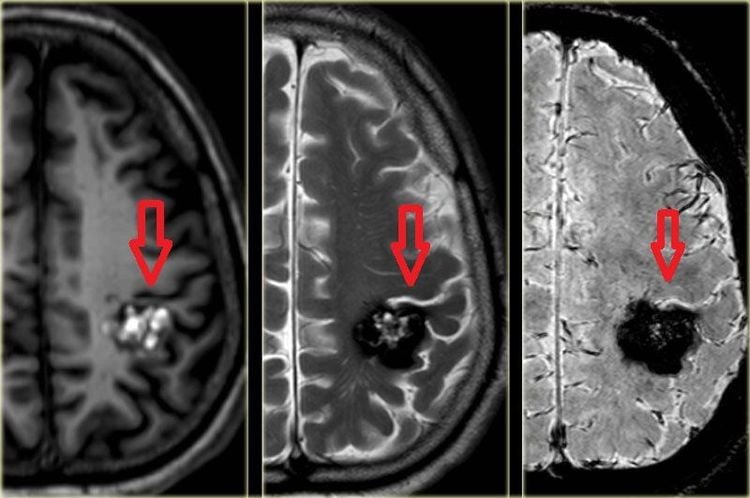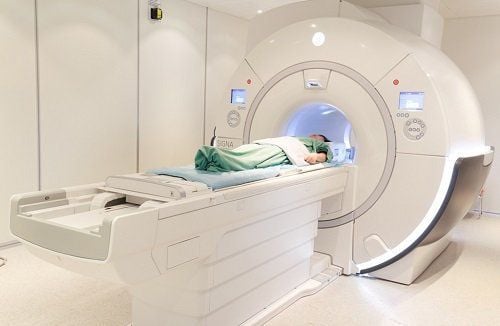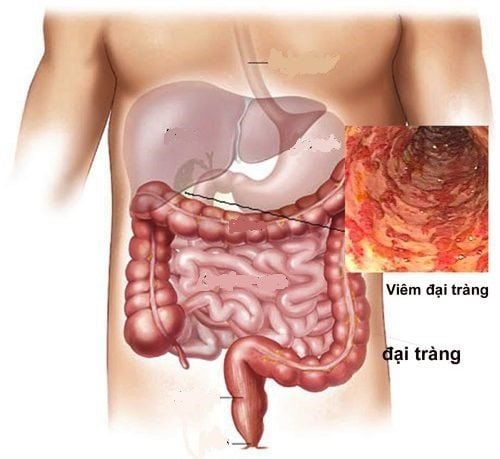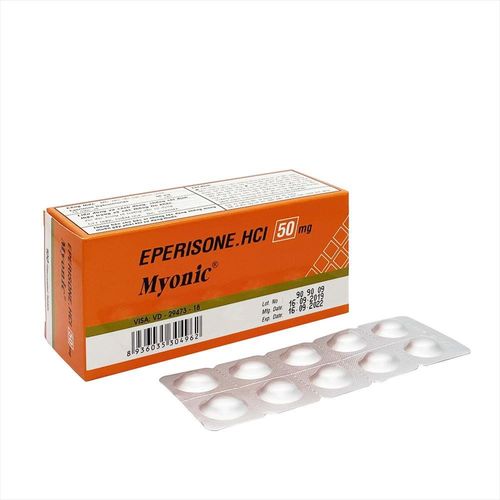This is an automatically translated article.
Magnetic resonance imaging is an important method in diagnosing cerebral palsy, and at the same time helps to make the prognosis of the disease to best serve the process of monitoring and treatment of doctors.1. What is cerebral palsy?
Cerebral palsy is a permanent disorder of motor and postural development that causes functional limitations due to disturbances occurring in the fetal brain or the developing infant brain. Cerebral palsy is often accompanied by sensory, cognitive, communication, behavioral, epilepsy, and secondary musculoskeletal problems.
Signs and symptoms of cerebral palsy appear early in infancy or in preschool-aged children. In general, cerebral palsy causes motor damage, accompanied by excessive reflexes, laxity or spasticity of the trunk and extremities, involuntary movements, abnormal posture, unsteady walking,... The patient has You may have difficulty swallowing, often with loss of coordination with the muscles that move your eyes (oculomotor) and may have limited range of motion in your joints due to muscle stiffness.
Cerebral palsy has many effects on the functional activities of the patient. Many cases are unable to walk, have mental retardation, have epilepsy, are blind or deaf,... Others can walk and have normal intelligence but have impairments in other activities.

Bại não gây tổn thương vận động, đi kèm với phản xạ quá mức, ảnh hưởng nghiêm trọng đến cuộc sống người bệnh
2. The role of magnetic resonance imaging in the diagnosis of cerebral palsy
2.1 Why is it important to diagnose cerebral palsy early? The average age of children when cerebral palsy was diagnosed was 19 months old. The age of diagnosis varies from 1 week to 3 years of age for children with severe motor impairment and from 1 week to 5 years of age for children with mild or moderate motor impairment.
Early diagnosis of cerebral palsy is important in timely intervention for patients when the child's brain is still flexible, thereby achieving the highest treatment effectiveness in maximizing the development results of the patient. young. At the same time, the early diagnosis of cerebral palsy also allows the child's family and parents to access psychological support methods to be ready to accompany the child in the treatment of the disease.
2.2 Magnetic resonance imaging to diagnose cerebral palsy Magnetic resonance imaging (MRI) is an imaging technique that examines the brain, which can show brain damage or abnormal development. An MRI scan of cerebral palsy uses radio waves and a magnetic field to create detailed 3D or tomographic images of the brain. From there, the doctor can identify damage or abnormalities, if any, in the brain. This method is painless but can be noisy, usually lasting about 1 hour. Your child will be given a mild sedative before the MRI scan.
MRI for children with cerebral palsy aims to:
Diagnose the disease All children with suspected or assumed brain damage should have magnetic resonance imaging. MRI is the gold standard neuroimaging technique to identify cerebral palsy - white matter brain lesions in children including periventricular leukoencephalopathy, deep gray matter lesions, malformations, neck infarction, cortical and subcortical lesions. However, it should be noted that about 12-14% of children with cerebral palsy have normal MRI results, so the definitive diagnosis of cerebral palsy should not depend entirely on MRI but should be combined with other diagnostic methods such as ultrasonography. brain sound, computerized tomography (CT scan) brain, EEG, blood test,...
Prognosis Magnetic resonance imaging method can provide doctors with some information to predict function power. In particular, periventricular white matter lesions detected by magnetic resonance imaging may suggest a milder motor impairment (the child is able to walk). while cortical, subcortical, and basal ganglia, when detected by MRI, cause more severe motor deficits (the child cannot walk).
Your doctor will consider possible causes of cerebral palsy, MRI findings, combined with information gathered about risk factors, neuroimaging, and motor function assessment to predict disease severity and prognosis.

Chụp cộng hưởng từ tại Bệnh viện Vinmec Times City
3. Magnetic resonance imaging where to diagnose cerebral palsy?
Currently, Vinmec Times City International Hospital is applying magnetic resonance imaging (tractography) or DTI - Diffusion Tensor Imaging using resonance imaging machines. from Pioneer GE 3 Tesla to diagnose cerebral palsy in pediatric patients. This is an advanced imaging technique, diagnosing cerebral palsy when axonal damage is suspected or it is necessary to find a relationship between the lesion and axon in order to avoid axonal damage when interfering with the lesion. Tension diffusion magnetic resonance imaging also provides important information about cerebral palsy that conventional magnetic resonance techniques cannot or is difficult to evaluate such as in tumorigenesis, inflammation, white matter disorders, etc.
.
Vinmec Times City Hospital has modern facilities, equipped with state-of-the-art machinery system, supporting accurate diagnosis of all diseases in general, cerebral palsy in particular and bringing the highest treatment efficiency. At the same time, the hospital also has a team of qualified and experienced medical doctors including:
Master, Doctor Ngo Van Doan: Has more than 16 years of experience in the field of diagnostic imaging, especially the techniques ultrasound, multi-slice computed tomography, magnetic resonance imaging; Specialist Doctor I Nguyen Thanh Hai: Has more than 20 years of experience in the field of diagnostic imaging, especially techniques of multi-sequence computed tomography, magnetic resonance imaging; Master, Doctor Vu Thi Hau: trained domestically and internationally at Viet Duc Hospital, Bach Mai Hospital, CHU Clermont Ferrand Hospital (France); Resident doctor Nguyen Quynh Giang: Has many years of experience in the field of diagnostic imaging, especially in the field of multi-sequence computed tomography, magnetic resonance imaging. To register for examination and treatment at Vinmec Times City International General Hospital, customers can call Hotline: 0243 9743 556 or register online HERE.













